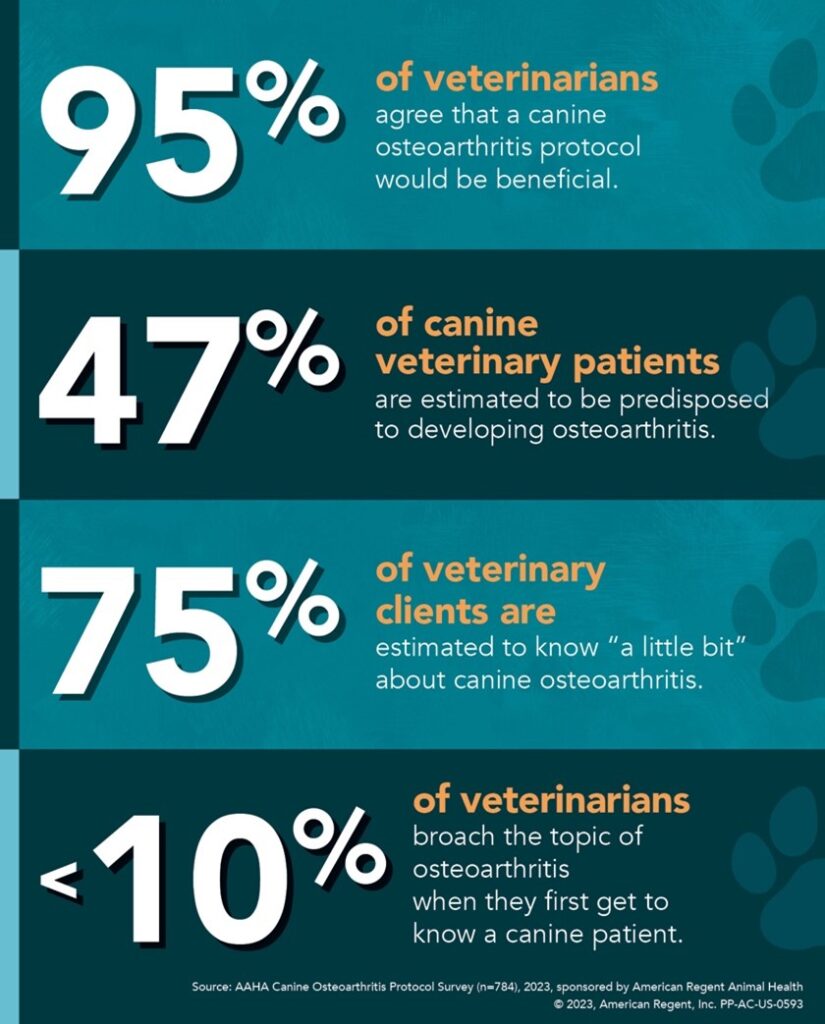A call to action for the veterinary community to prioritize early osteoarthritis (OA) detection and management in clinical practice has sprung from a recently concluded survey.
Conducted by the American Animal Hospital Association (AAHA), in partnership with American Regent Animal Health and veterinary orthopedist Denis Marcellin-Little, DEDV, DACVS, DACVSMR, CCAT, the survey has revealed a demand among the 800 participating veterinarians for a structured protocol to manage canine OA, especially when it comes to early detection in younger dogs.
Ninety-five percent of veterinarians surveyed agree a canine OA protocol would be “beneficial,” indicative of the need for standardized care procedures.
“It’s extremely rare that 95 percent of veterinarians would agree on anything,” says Dr. Marcellin-Little, a professor at the University of California (UC), Davis, School of Veterinary Medicine. “This consensus is a cry for help—a clear demand for more structure in managing osteoarthritis.”

The survey also reflects the practitioners’ self-assessment of their knowledge.
In understanding the onset of canine OA, participating veterinarians rated themselves a seven out of 10, or a “C” grade equivalent, according to Marcellin-Little. In managing the disease, the survey yielded a slight rise of eight out of 10. “There’s a bit more confidence in management than in detection, which shows that we should be focusing on early onset,” Marcellin-Little adds.
With veterinarians estimating 45 percent of their patients have osteoarthritis, 47 percent are predisposed to it, and 26 percent have early-onset disease, the survey presents a window of opportunity for early intervention.
“A quarter to half of our patients may be in the early stages of osteoarthritis,” says Dr. Marcellin-Little. “This justifies a stronger emphasis on early detection.” In addition, veterinarians say 75 percent of their clients know only “a little bit” about canine OA, presenting an opportunity for better client education.
“We should be talking about osteoarthritis when it’s a non-issue—before it becomes a problem,” says Marcellin-Little.
For more information, click here.

